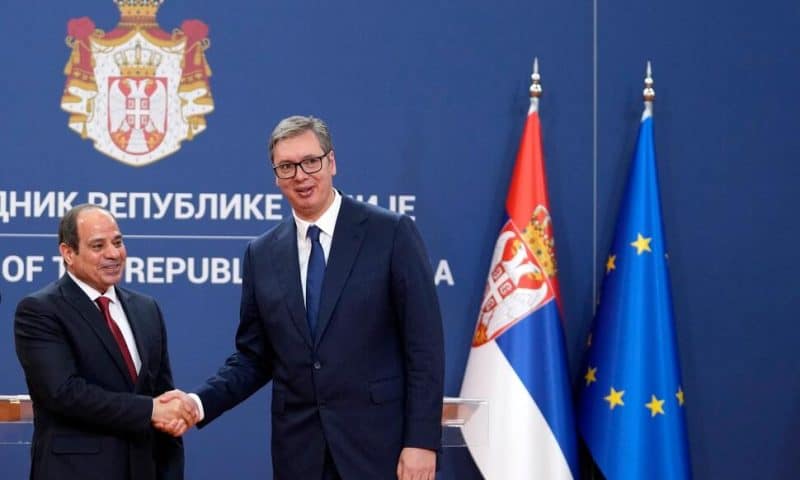Egypt and Serbia have agreed to boost political, economic and other cooperation as the two countries look for ways to deal with the global impact of the Russian invasion of Ukraine.
BELGRADE, Serbia — Egypt and Serbia on Wednesday agreed to boost political, economic and other cooperation as the two countries look for ways to deal with the global impact of the Russian invasion of Ukraine.
Egypt’s President Abdel-Fattah el-Sissi was in Serbia on a three-day visit this week — the first in more than three decades by an Egyptian president. His host, Serbia’s President Aleksandar Vucic, said the visit had a “historic character.”
“It will bring so much in the future,” Vucic said at a joint press conference with Sissi. “This is just a beginning.”
The two leaders signed a partnership declaration, Vucic awarded el-Sissi a state decoration and announced plans for a free trade agreement by the end of the year. A business forum was held as officials signed a series of deals focusing on fields of cooperation.
“Both our countries should cooperate for better economies in relation to the global events,” said el-Sissi. “Egypt expects stronger cooperation in all fields.”
Vucic said Serbia will export grain, primarily wheat, to Egypt, which has been hit hard by the price hikes caused by the war in Ukraine. Egypt is among the world’s largest importers of wheat, with much of that from now-blocked Ukrainian ports.
Serbia, a candidate country for European Union membership, has refused to join Western sanctions against Russia and has maintained friendly relations with Moscow despite the war. Both leaders said the war in Ukraine was among the topics discussed at their meeting Wednesday.
“Egypt is a country that wishes to see everything resolved peacefully and through agreements,” said el-Sissi, who met with U.S. President Joe Biden in Saudi Arabia last week.
El-Sissi and Vucic also evoked during their press conference the decades-old ties of Belgrade and Cairo as founding members of the Non-Aligned Movement of nations outside the opposed blocs during the time of Cold War divisions.

